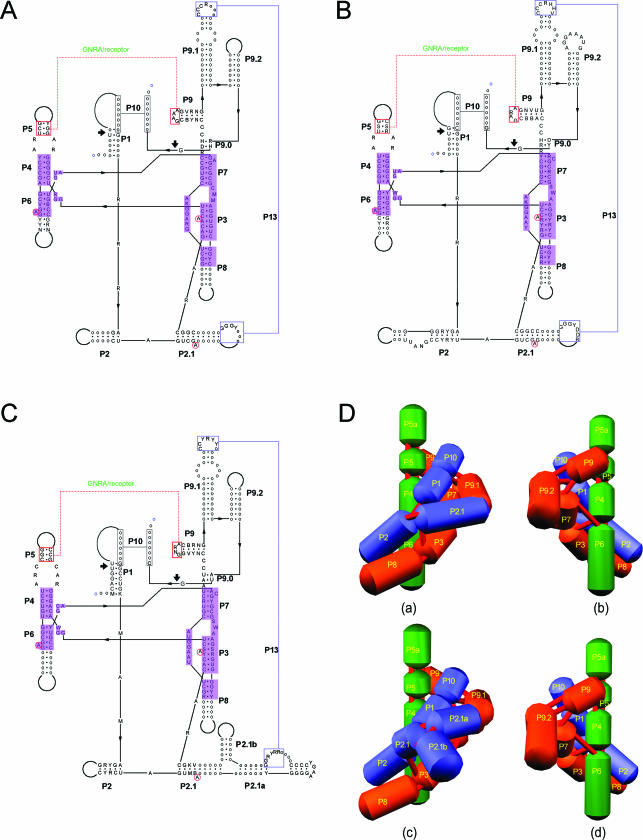Figure 2.
Predicted structures of IE introns. The common secondary structures of IE1 (A), IE2 (B) and IE3 (C) introns are shown. The highly conserved core sequences used in the distance computation are shaded in purple. The conserved sequences (90% or over) of each minor subgroup are indicated. When two or three bases collectively respond for the conservation at one site, they are denoted using degenerate codes: R: A/G; W: A/U; Y: C/U; M: A/C; S: C/G; K: G/U; B: not A; V: not U; H: not G; D: not C. Non-conserved sequences are denoted as circles. (D) The outlined tertiary structures. Upper row shows the models for IE1 and IE2 introns: (a) front view and (b) back view. Lower row shows the models for IE3 introns: (c) front view and (d) back view.

